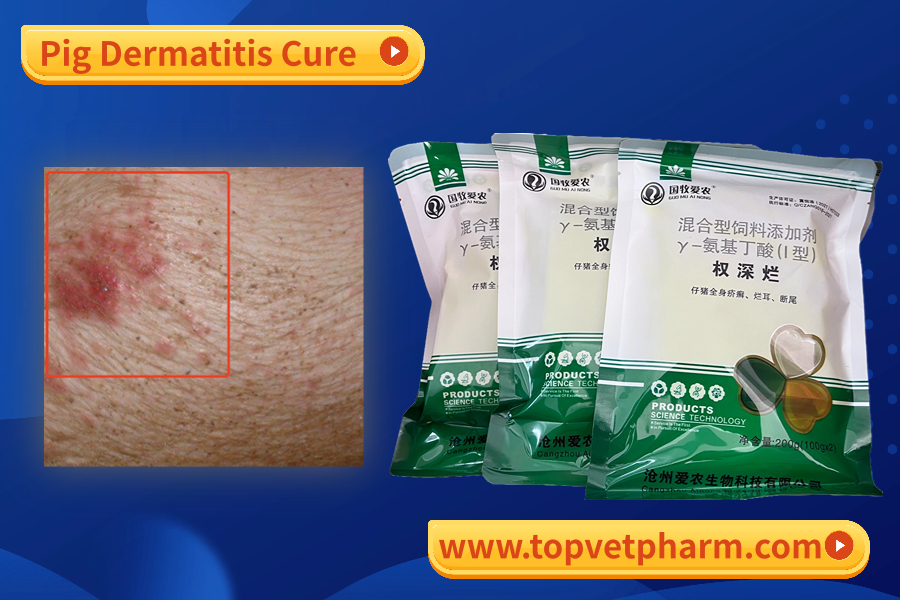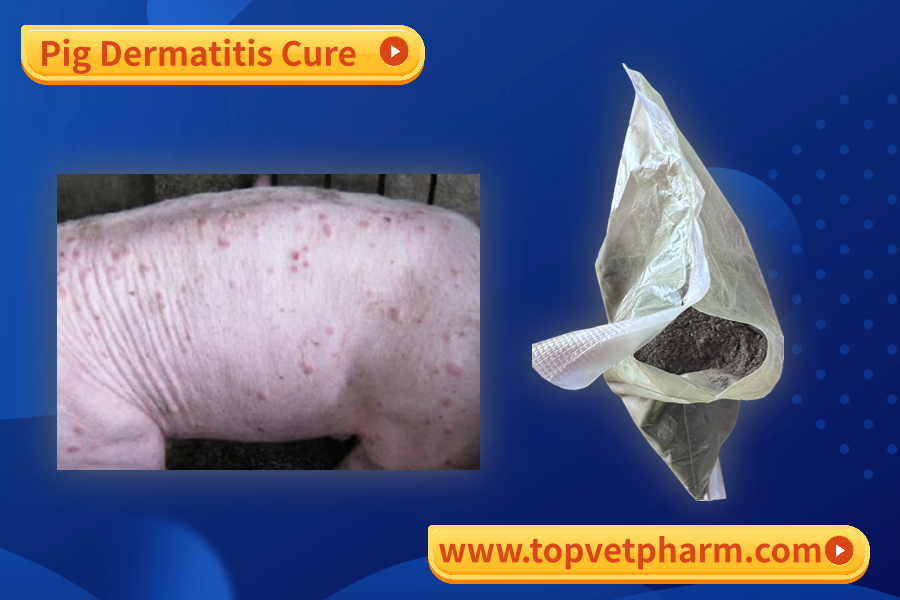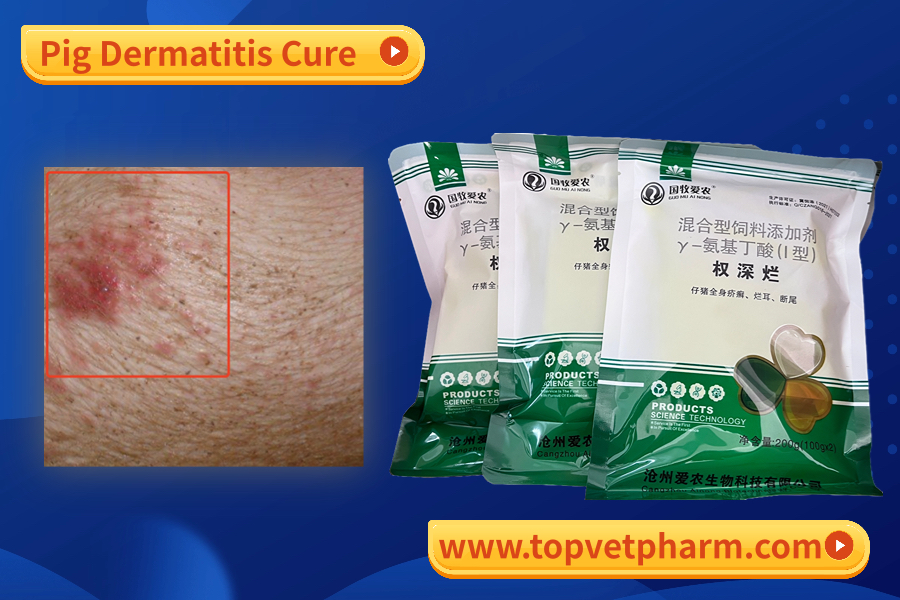Oct. 12 , 2023
Dermatitis in pigs, often referred to as "skin inflammation" or "skin irritation," can be caused by various factors such as parasites, environmental conditions, allergies, or other underlying health issues. It's essential to identify the root cause of the dermatitis to provide effective treatment. Here are some general steps for treating dermatitis in pigs:

Identify the Underlying Cause:
Examine the pig's environment for any potential irritants, such as sharp objects, rough surfaces, or exposure to excessive moisture.
Check for signs of parasites like mites or lice, which can contribute to dermatitis.
Review the pig's diet and ensure it's balanced and not causing allergic reactions.
Isolate Affected Pigs:
If you have multiple pigs, consider isolating the affected pig to prevent the condition from spreading to others.
Provide a Clean and Comfortable Environment:
Ensure that the pig's living area is clean, dry, and free from potential irritants.
Provide adequate bedding, such as straw or shavings, to prevent further skin irritation.
Bathing and Grooming:
Bathing the pig with mild, non-irritating soap or shampoo can help remove dirt and debris from the skin. Make sure to rinse thoroughly.
Groom the pig regularly to remove scabs, crusts, and loose hair.
Topical Treatments:
Treatment use by Dermatitis Cure . Pure hebal can use in pregnant sow .
Also can use for Lactating piglet skin dermatitis or eczema treatment.
Use Method: gavage medicine to sow. Piglets drink their sow's milk.

Consult a Veterinarian:
If the dermatitis is severe, persistent, or if you suspect an underlying health issue, consult a veterinarian with experience in pig care.
The veterinarian can perform diagnostic tests to identify the cause and prescribe appropriate treatments, including antibiotics, anti-parasitic medications, or other medications.
Dietary Adjustments:
Ensure the pig's diet is well-balanced and free from allergens that may contribute to skin issues. Consult with a veterinarian for dietary recommendations.
Preventive Measures:
Once the dermatitis is treated, take steps to prevent its recurrence. This may include ongoing management of the pig's environment, parasite control, and good hygiene practices.
It's crucial to work closely with a veterinarian experienced in pig care to determine the underlying cause of dermatitis and develop an appropriate treatment plan. Pig skin can be sensitive, and certain medications or treatments that are safe for other animals may not be suitable for pigs, so professional guidance is essential.









